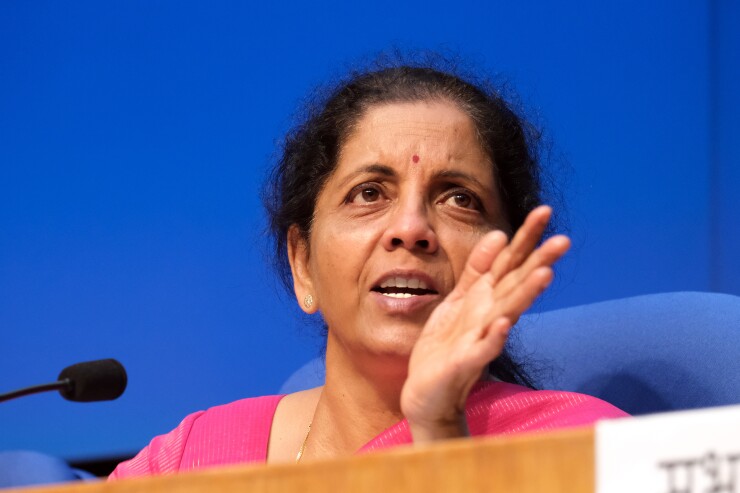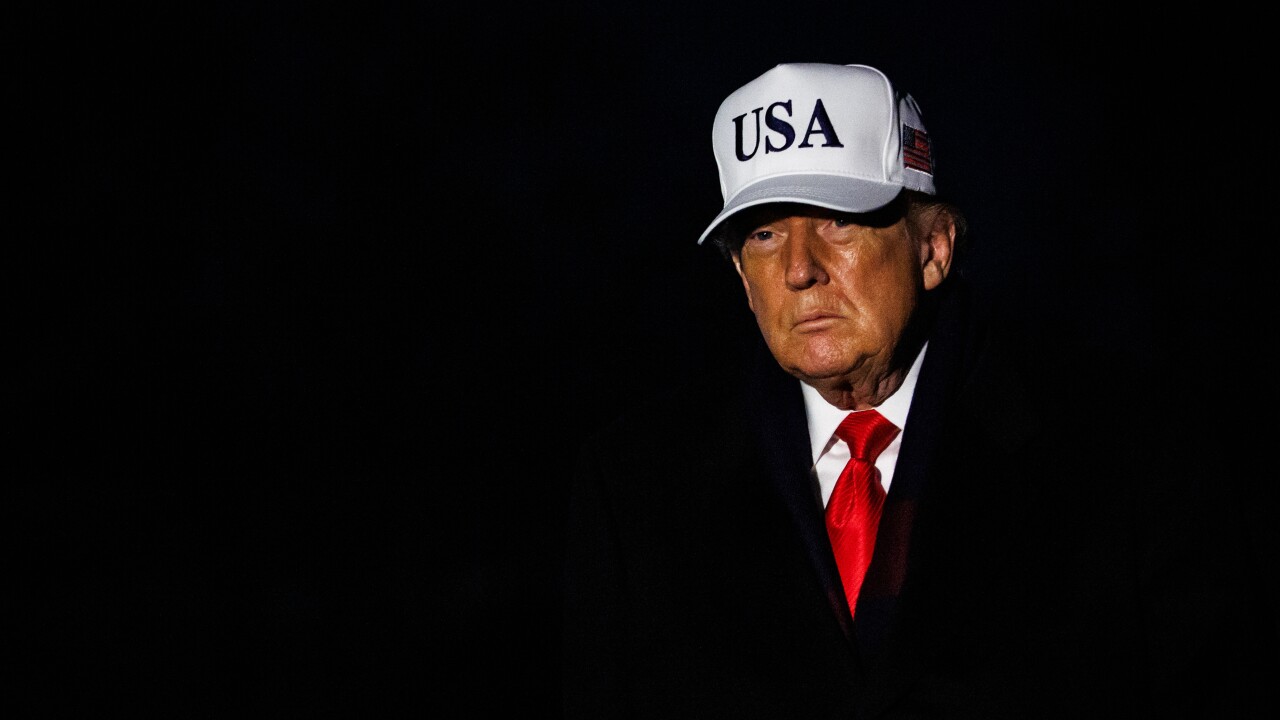The U.S. card brands are already pushing Indian regulators to relax their data storage rules, and a new quirk in the country’s tax code creates a battle on an entirely different front.
Finance Minister
While the move is designed to encourage Indians to reduce their use of cash, the policy leans toward government-affiliated rails at the potential expense of outside brands such as Visa and Mastercard.

Visa and Mastercard did not return requests for comment. The U.S. card networks have a lot at stake since both are making major investments in building a market in India.
The card brand's investment comes as
These incentives have made some progress, though most transactions are still cash-based, and about
The new budget provides no-fee digital payment options that include India’s United Payments Interface, Aadhaar Pay, “certain debit cards,” UPI-QR code, NEFT and RTGS.
Merchants in India pay a 2% merchant discount rate for card transactions, and could save by using the government-backed digital payment rails, since Sitharaman’s speech said India’s RBI and banks will absorb the fees.
She contends these fees will be offset by the reduced cost of handling a lower volume of cash and paper-based payments. As a further enticement, India’s government is also proposing a 2% tax “at source” for cash withdrawals of more than about $145,000 in a single year to discourage cash usage.
These incentives potentially come at the expense of external parties such as U.S. card brands if Indian merchants view the government-backed payment rails as more convenient and less expensive than U.S. options.
Visa and Mastercard are at odds with the Indian government over data storage, so another regulatory battle is likely unwelcome. The U.S. card brands recently began complying with India’s local payment data storage requirements while continuing to lobby the Indian government to ease the rules.
India’s new budget does not address Visa and Mastercard directly, though Sitharaman’s reference to “certain debit cards” is an indirect reference to
The bank-operated National Payments Corporation of India runs
Mastercard has entered a series of partnerships to build its digital payments operations in India, such as a collaboration with low-cost payment acceptance company Payswiff, which connects to digital wallets and UPI; and Signzy, a fintech that offers merchant onboarding.
Other countries have also challenged the U.S. payment networks, including
“The challenge is acceptance,” said Tim Sloane, vice president of payments innovation at Mercator. “When e-commerce is driven by international orders, the local network will simply not suffice — and international orders are growing fast. Competing on price will win business only if fraud rates and disputes are properly managed, and that’s an area where the U.S. payment networks may also have an advantage because they’ve been doing it longer.”





